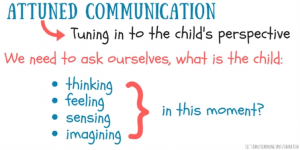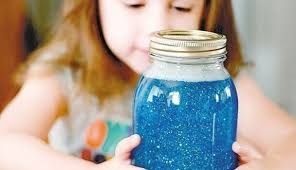Self-regulation in the EYFS: Unfit for Purpose
By Mine Conkbayir – Lecturer, Author & Trainer
10th December 2018
Share this entry:
I have been writing and talking about the fundamental importance of understanding self-regulation (SR) and the neuroscience of early brain development for well over a decade and in this time, I am disappointed to have not seen it feature in early years (EY) qualifications or training as mandatory practice. However, recently things have changed and self-regulation (which simply put, is the individual’s ability to manage big emotions and their resulting behaviours, and to return to a state of calm) has become the “buzzword” in the EY sector.
‘What’s the problem?’ you may well ask. Based on my observations, a few key issues come to mind; including the proliferation of unscrupulous consultants who have misunderstood the meaning and purpose of SR, selling training that offers to ‘manage behaviour through SR’. SR and behaviour management are diametrically opposed concepts that do not go together. Critically, we are now faced with the EYFS revised Early Learning Goals (ELGs) coming into force in 2019 – seemingly a positive step on behalf of the government, but (and herein lies another key issue), how is the EY workforce supposed to nurture SR when they have received no mandatory training in nurturing these vital life skills?
It is safe to say that the arrival of the revised Early Learning Goals (ELGs) has been met with much criticism given its reduced emphasis on physical development and particularly, the introduction of self-regulation (SR) – which is the focus of this article. Distinguished Research Professor Emeritus of Philosophy and Psychology, Dr Stuart Shanker defines SR as existing in five core domains of experience:
- Biological
- Emotion
- Cognitive
- Social
- Prosocial
Shanker (2018) goes on to explain that:
When an individual’s stress levels are too high, various brain/body regulatory systems that support thinking, emotion regulation, social engagement and even metabolic recovery are compromised. The signs of dysregulation can show up in the behaviour, mood, attention and physical well-being of a child.
While eminent neuroscientist, Dan Siegel defines SR as:
The way the mind organizes its own functioning … fundamentally related to the modulation of emotion … Emotion regulation is initially developed from within interpersonal experiences in a process that establishes self-organizational abilities.
Essentially, both definitions highlight the fact that the brain is a social organ, growing and refining itself through social interactions and meaningful relationships. It is through our relationships with others (especially key adults) that we develop the ability to manage (or control) ourselves – that is, to self-regulate our emotions and behaviour. It is a deeply complex and precarious process which therefore cannot be taught with a tick-box approach.
Yet, each of the 11 SR ELGs which have been introduced are quite some way off the mark, failing to acknowledge the psychological world of children. For example, children are expected to:
- Show an understanding of their own feelings and those of others, and regulate their behaviour accordingly
- Pay attention to their teacher and follow multi-step instructions
- Manage Self
- Manage their own basic hygiene and personal needs, including dressing and going to the toilet
- Understand the importance of healthy food choices
Those who have written the ELGs have grossly misinterpreted SR and as a result, have misinformed an entire workforce, where children will ultimately pay the price, especially those who experience emotional and social sensory integration difficulties and learning disabilities. What we are left with are inaccurate, vague and brief descriptors of SR which are utterly disrespectful and dismissive of the child. Take for example ’regulate their behaviour accordingly’ and ‘manage self’– a young child cannot readily achieve this without co-regulation (broadly described as an interaction between two individuals and the strategies used to help regulate the child’s emotional responses to their environment) with an adult. Yet this term does not feature at all, by way of explaining how to help children achieve SR. Children’s ability to self-regulate is still developing and hence often goes up and down – being able to consistently regulate their own feelings and behaviour is a major task for a young child and co-regulation is integral to this process, providing them with a healthy blueprint of how to respond to triggers and regulate their own behaviour and learning.
The concept of SR cannot be confused with expecting a child to eat independently or to resolve conflict without adult support. Practitioners have raised with me the issue of children who have not experienced secure attachments and who consequently lack the ability to self-regulate as they have not had this modelled to them – what happens to these children under the revised ELGs? Given the deep complexity of SR and the responsibilities of the practitioner in understanding and nurturing it through co-regulation – a wonderful opportunity for the workforce has been lost.
Understanding SR can equip practitioners to be more sensitive and attuned to babies’ and young children’s emotional states and consequent ability to get on, not only at nursery or school but throughout their lives. Crucially, research shows that a child’s ability to self-regulate at three years old is a better indicator of school success than IQ (Siegel, 2015; McClelland et al., 2013; Blair and Diamond, 2008). Yet we are seeing a higher number of children enter nursery and school with a range of complex emotional issues which are preventing them from engaging socially, intellectually and ultimately failing to thrive – with practitioners insufficiently equipped to respond to these children’s behaviours, alongside the use of ‘behaviour management’ strategies which only serve to make matters worse. Many factors in the home also compound children’s difficulty in mastering SR, due to the very nature of ‘caregiving’. This includes consistently high levels of negative emotional responses from parents and the presence of anger in parent-child interactions (Siegel, 2013; Wyman et al., 2010; Perry, 2007; Salonen et al., 2005), alongside a range of parental mental health issues which may prevent them from being able to tune in to their baby or child and provide the co-regulation that is necessary for children to develop SR.
Much of this can be prevented if professionals (and parents alike), truly take the time to use all of those experiences within the daily routine to co-regulate – as opposed to getting frustrated and wasting great opportunities to nurture SR, because it is during these times that their self-confidence and communication skills are being built – or not, depending on the practitioner’s responses. Also, gently teaching the youngest children how to safely express anger and frustration, how they can overcome fear, resolve conflict and delay gratification also helps to build a better relationship between the practitioner and the child – so this virtual cycle can continue and be extended.
So, when does this vital skill, SR, start to develop and how? Some professionals erroneously think that we can’t teach babies to self-regulate because they’re too young. This is far from the truth! We provide the foundation on which SR develops. This includes attuned communication from birth, truly listening and responding to needs and feelings being communicated and co-regulating their emotional state. Co-regulation is a necessary precursor to SR. The attuned, responsive and focused gestures support the young child to regulate their responses in line with what is happening in that context. It might be that they had to tidy away before they could finish a drawing, or that they were finding it difficult to say ‘goodbye’ to their father at drop-off in the morning. Your tone of voice, eye contact, conversation and cuddles can help to immediately enable a child to return to that calm and psychologically safe place so that they can get on with the serious business of play and learning.

The state of dysregulation intensifies rapidly when adults do not understand how to bring the child back to a regulated, calm state. Practitioners need to understand and acknowledge that stressed brains cannot learn. During times of stress, anxiety or fear, the downstairs, emotionally reactive brain takes control over the upstairs, cortical brain (where all those executive functions reside such as concentration, planning, paying attention, curbing impulsive behaviours, problem-solving and regulating emotions). This is where a child might ‘flip their lid’ (or enter flight-or-flight mode) – e.g. shouting, hitting, losing control or becoming inconsolable, and will need adult support (co-regulation) to help regulate their limbic stress-behaviours.
Not being one to complain without doing something about it, I developed what is now an award-winning online Cache Endorsed Learning programme, Applying Neuroscience to Early Intervention, which is immersed in the neuroscience of early brain development – focusing on the importance of nurturing SR in children. One EY practitioner engaging with my programme reflects on how understanding SR and the developing brain helps us to co-regulate children’s emotional responses to stressors. She says:
This knowledge helps as we are more aware of how stressors affect a child’s developing brain and the impact these have. As practitioners understand more about brain development, our knowledge can help us to co-regulate with children to help them to self-regulate. We can co-regulate by being consistent, positive and reflective with our children ensuring that we are attuned, actively listening and responding to a child’s needs and thus co-regulating their emotional state. We can support children’s emotions when experiencing stressors through continuous reassurance, cuddles, eye contact and tone of voice, to supporting them in line with their needs at that time – not reprimanding or isolating them.
Patterns of emotional exchange contribute to the formation of children’s sense of self and to mutual expectancies within relationships (Meadows, 2016; Gerhardt, 2015; Cicchetti and Valentino, 2013), and high-quality early years provision can make all the difference to promoting the emotional and social wellbeing of children. This will be especially valuable where babies and children are deprived of warm, reciprocal relationships in the home. Below are just a few suggestions to support self-regulation:
- ‘Name it to tame it’ (Siegel, 2013) – encouraging a child to talk through their emotions can go halfway towards diffusing their intensity
- Nurture children’s emotional vocabulary
- Scaffold the behaviour you want to encourage
- Give models that can be imitated and applied to a range of scenarios
- Praise children for the attempts they make at managing ‘big’, overwhelming emotions
- Refrain from making unhelpful judgements – these do nothing to nurture alternative behaviours
- View challenging situations as learning opportunities
- Involve children in decision-making processes
- Find alternative ways to diffuse difficult emotions – glitter jars are proving a popular choice for many children!

Mine’s first-ever conference takes place on 4 February 2019. Details can be found at: https://www.butterflyprint.co.uk/product/conference-the-neuroscience-of-early-intervention/
For bespoke training on nurturing self-regulation within the EYFS, or if you are interested in signing up to Mine’s award-winning Cache Endorsed Learning Programme, contact Mine at: mine@mineconkbayir.co.uk
Why attend Childcare Expo?
Join over 2,500 like-minded individuals from the early years sector who are dedicated to improving both practice and their childcare settings.
Attend educational seminars to credit your CPD
Meet the experts to have your questions answered
Receive fantastic onsite offers and discounts
Experience expert-led informative hands-on workshops
Network with peers and industry players
Pick up hundreds of new product ideas and services
And most of all, enjoy a great day out with your colleagues





